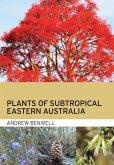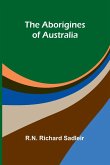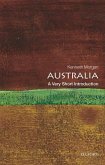Australia has a rich and diverse history that stretches back tens of thousands of years, encompassing the stories of its Indigenous peoples and its transformation into a modern nation. This history can be divided into two broad eras: the pre-European period dominated by Aboriginal and Torres Strait Islander cultures, and the post-European settlement period beginning in the late 18th century. Indigenous Australia Australia's history begins with its Indigenous peoples, who are among the world's oldest continuous cultures. Archaeological evidence indicates that Aboriginal Australians arrived on the continent at least 65,000 years ago, likely via land bridges and short sea crossings from Southeast Asia. Over millennia, they developed complex societies, languages, spiritual beliefs, and sustainable land management practices that were deeply connected to the land, water, and sky. Aboriginal people lived in harmony with the environment, using sophisticated knowledge of the seasons, plants, and animals to thrive in diverse landscapes ranging from arid deserts to lush rainforests. The Torres Strait Islanders, another Indigenous group, lived on the islands between Australia and Papua New Guinea. These seafaring communities were skilled navigators and traders, maintaining cultural links with neighboring regions. Collectively, Indigenous Australians comprised hundreds of nations, each with distinct languages and customs. The arrival of European settlers disrupted this way of life, leading to profound changes in Indigenous societies, many of which persist as challenges today. European Exploration and Colonization In 1606, Dutch navigator Willem Janszoon became the first recorded European to reach Australia, landing on the western shores of Cape York Peninsula. Over the next century, Dutch, Portuguese, and Spanish explorers charted parts of the Australian coastline, referring to the land as "New Holland." However, it was the British who would establish lasting ties with the continent. In 1770, Captain James Cook claimed the eastern coast of Australia for Britain, naming it New South Wales. The British saw Australia as a solution to overcrowded prisons in Britain, leading to the establishment of a penal colony. In 1788, the First Fleet, carrying convicts, soldiers, and settlers, arrived at Port Jackson, where the city of Sydney would eventually grow. This marked the beginning of British colonization. Expansion and Conflict Throughout the 19th century, British settlement expanded rapidly across the continent, driven by the discovery of gold, the growth of agriculture, and the demand for land. This expansion often led to violent conflict with Indigenous peoples, whose lands were forcibly taken. Diseases introduced by Europeans, as well as policies of displacement and assimilation, decimated Indigenous populations. Australia's colonies gained greater autonomy over time, culminating in the federation of six colonies into the Commonwealth of Australia in 1901. The new nation adopted a constitution and maintained close ties with Britain. Modern Australia In the 20th century, Australia played significant roles in global conflicts, including both World Wars. Post-war immigration programs transformed Australia into a multicultural society, with people from Europe, Asia, and beyond contributing to its development. In recent decades, Australia has grappled with its colonial past, acknowledging the injustices faced by Indigenous peoples. Efforts toward reconciliation, such as the 2008 Apology to the Stolen Generations, have sought to heal historical wounds. Today, Australia is a thriving democracy with a unique blend of cultures, built on an ancient foundation of Indigenous heritage and a history of exploration, resilience, and growth.
Hinweis: Dieser Artikel kann nur an eine deutsche Lieferadresse ausgeliefert werden.
Hinweis: Dieser Artikel kann nur an eine deutsche Lieferadresse ausgeliefert werden.








